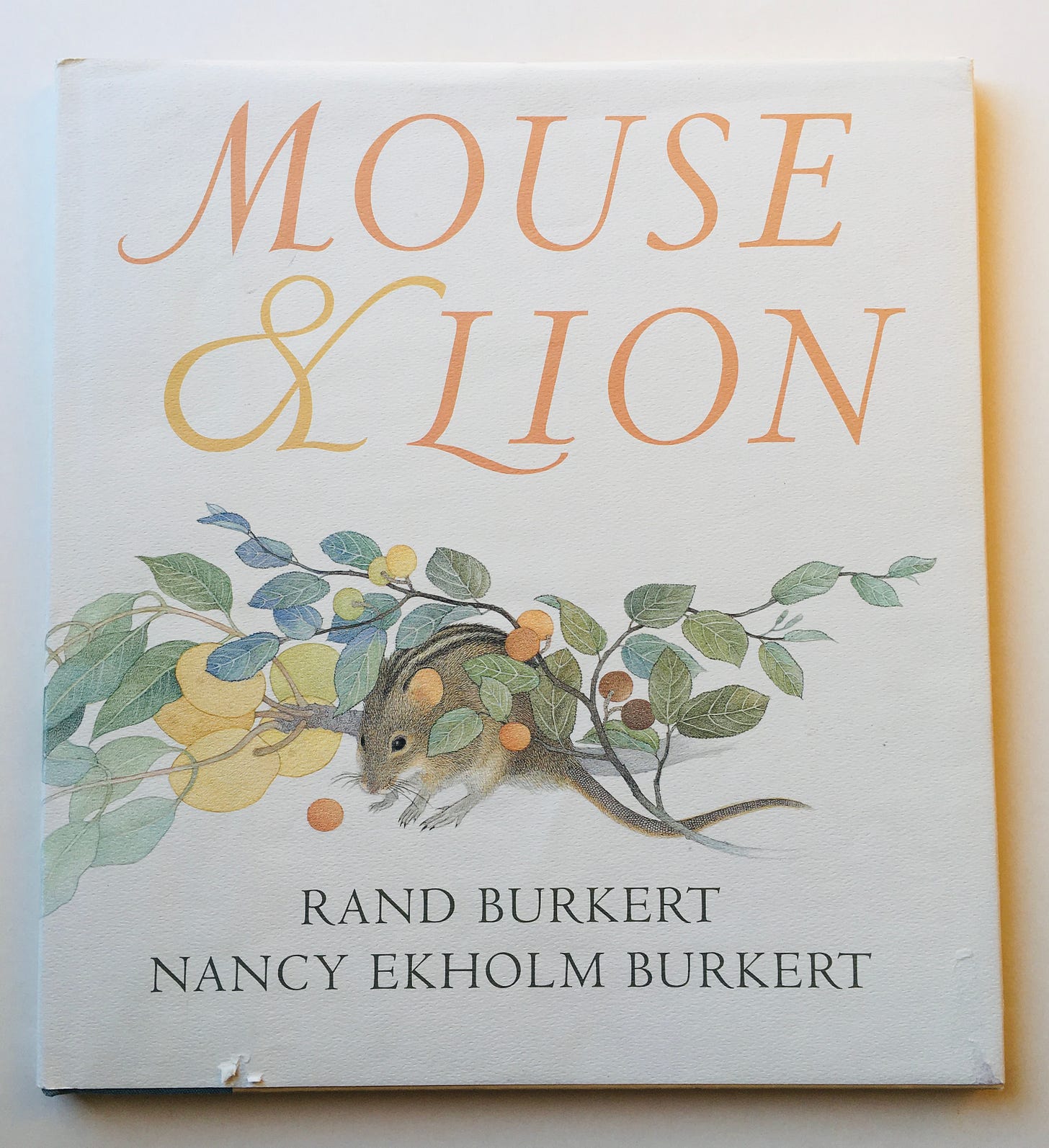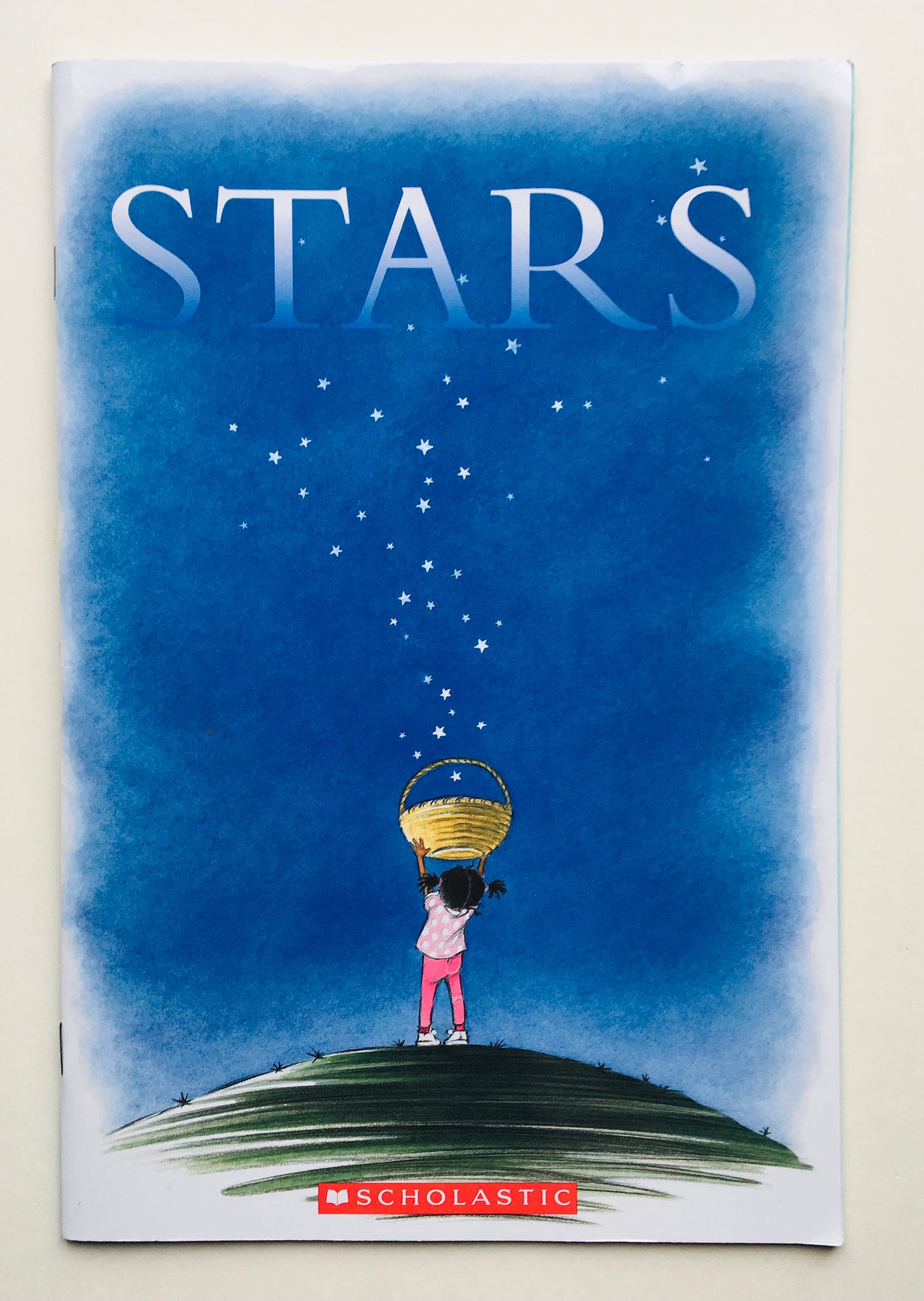Hello, good people!
Thanks so much for hanging with me while I took a little break from this newsletter. I’m grateful to those of you who supported me behind the scenes (even if you didn’t realize you were doing it), as well as to all of you who signed up in the interim since I’ve published anything. If you’re new here and want to know who the heck I am and what this newsletter is about, you’ll find that information here. For those of you wondering what you missed, I published an interview with author and nonfiction expert Melissa Stewart, as well as a Spotlight On: Math issue. (If developing mathematical thinking through children’s books is your jam, that one’s for you.)
I appreciate the space in your inbox and your brain.
I appreciate you.
I know how hard you are working to make sure the children in your life have books in their hands and their bedrooms and their backpacks. I see you reading poetry to your tweens over breakfast. I see you breathing through the 17th repetition of that one specific board book in a single day. I see you struggling to keep your eyes open while you finish a chapter before lights out. I see you doing all of this in the midst of stress and news and nervous system dysregulation, not to mention despair and suffering; I see you parenting (and grandparenting and supporting and taking care) while the world fills with further uncertainty and grief after years of the same. Please know that these are the times when these seemingly little things — reading to the children in your life, making books available, keeping the good things about this world and the complex, fallible people in it alive and beautiful for them — matter most. Your effort is love as a verb: love in action, and you are doing such a great job. Keep going!
I’ll keep going too — it’s a joy to write for you. Thanks for being here.
Mouse & Lion by Rand Burkert, illustrated by Nancy Ekholm Burkert (2020)
Of all of Aesop’s fables, this is our favorite — as a parent I find myself referring (and not always calmly) most often to “The Boy Who Cried Wolf” and “The North Wind and the Sun,” but my children love “The Lion and the Mouse” best.
It’s not hard to understand why — Burkert’s adaptation of this ancient fable only improves upon something outstanding already. For those of you who don’t know the basic bones of the story, it’s this: one day a lion catches a mouse. The mouse begs for mercy, promising that if the lion ever needs help, he will help. The lion is skeptical — how can a little mouse help a big lion like him? — but he lets the mouse go. Awhile later, the lion finds himself in a trap. The mouse comes along, chews the ropes of the trap and saves the lion’s life. The moral of the story, depending on which version you read (and given that Aesop’s fables are 1500 years old, there are a LOT), is a mashup of the ideas that kindness is never wasted, that both the big and the small have need of one another, that mercy brings its own reward.
It’s a good story in its most basic form, but Burkert improves it even further by fleshing it out with further details that satisfy just enough — suitable for children like mine, who have had questions about aspects of the story from the first time they heard it, and good for littles who can’t sit through a long tale but can still appreciate a dynamic and somewhat strange situation.
By far, the best part of this title, though, is Ekholm Burkert’s breathtaking pencil, charcoal and watercolor illustrations, which are so beautifully shaded and textured there is no way to explain their grandeur without simply handing you this book myself.
This one is 110% worth getting your mitts on.
Stars by Mary Lyn Ray, illustrated by Marla Frazee (2011)
“A star is how you know it’s almost night.”
Less a narrative and more a poetic paean to the wonder of stars and one’s imagination — whether it’s thinking about collecting stars “like little silver eggs you could gather in a basket,” or cutting a star out of paper, pasting it to a stick, and waving it around just so to see a wish come true (“Not always. Only sometimes. You never know about a wish”) this is a lovely, almost meditative read for anyone who has ever looked up and felt awed at the vastness of space and all we cannot see.
There is another element present here, a subtle social-emotional undercurrent that shows up in the tacit acknowledgment that stars are also a kind of metaphor — “Some days you feel shiny as a star. If you’ve done something important, people may call you a star. But some days you don’t feel shiny” — as well as a tangible tool often used with children (“And if you always brush your teeth, someone might give you a red or green or blue or gold or silver star).
I am a mega-fan of Frazee’s — I never tire of her work, and especially admire the sensitivity of her graphite, gouache, and gel pen illustrations here. This book is a love song to the majesty of the night sky and our tiny but entirely miraculous place in it, sd well as a gentle acknowledgment of the wonder of each one of us, as unique and precious as stars.
🌟 If you like books about the stars, check out my mini booklist on stargazing and other nighttime adventures from July 2021.
Can we read? is a reader-supported guide to children’s books, raising readers, and building a culture of reading in your home. Want to help spread the word about this resource? Pass it on!
It Could Always Be Worse by Margot Zemach (1976)
Truth: once upon a time, I told the story of this old Yiddish folktale during a 12-Step meeting, I’m sure to make a point about perspective, if not gratitude, and appreciation for our lives exactly as they are.
There’s a reason I told it — it’s a great story that exemplifies all of the above — so when I first came across it in picture book form, and by one of my favorite illustrators, no less, I snapped it up and couldn’t wait to share it with my children.
Here, a poor man lives with his wife, his mother, and his six children in a one-room hut. “Because they were so crowded, the man and his wife often argued, the children were noisy and they fought. In winter, when the nights were long and the days were cold, life was especially hard. The hut was full of crying and quarreling.” So the man goes to his rabbi for advice, and what he hears is not what one might expect: bring all your birds inside, the rabbi tells the man. All of them? asks the man. Yep. So the man brings his chickens, rooster, and goose into the hut to live with the family.
Maybe you can guess where this is going.
Life is totally untenable, way worse than before (now there are feathers in the soup!), so the man returns to his rabbi some days later and again asks for help. The rabbi tells him to go home and bring in his goat. The man follows directions, and, of course, things get even worse — “my life is a nightmare,” the man says. The man goes back to the rabbi, who this time tells him to bring inside his cow. The man again does as he is told, and the hut devolves into complete madness. When he can’t take it anymore, the man returns to the rabbi a final time, begging for help. The rabbi tells him to remove all the animals from his house, which he does — and basks in the peace of crowded life with only his wife, his mother, and his six children.
Zemach’s pen and watercolor illustrations are, as always, vivid, her characters evocative and fully expressive, which lends a lot to the entertainment value here — you can see things falling apart (the family is fighting, the animals are going berserk) and can almost palpably feel the chaos increasing as the number of creatures inside the hut does the same. It would be a masterpiece of storytelling on its own were it just a silly story with no moral, but as it is, it’s a wonderful reminder for all of us: when you think you have it bad, things could always be worse.
Arabel's Raven by Joan Aiken, illustrated by Quentin Blake (1972)
If, in looking at this book’s cover, you think, what goofiness is this? Your instincts are spot on — this goofy story about a girl and her pet raven is told with perfect 1970s verve. (I recommend it on audio for full goofiness factor, unless you are particularly adept at both a British accent and squawking like a large, unruly bird).
When Arabel’s taxi-driver father comes home one day with an injured raven, it’s love at first sight for both Arabel, a little girl, and Mortimer, an enormous, loud, black bird. Broken down into three episodic stories, each detail the complete (and hilarious) chaos Mortimer wreaks wherever he goes — in one, aptly titled The Breadbin, Arabel’s mother battles the raven over rights to, well, the breadbin, which Mortimer has claimed as his sleeping place (I will let you guess who wins); in another, Mortimer gets caught up in a robbery (wherein he ends up with a squirrel strapped to his back) that results in miscommunications of such epic proportions, law enforcement explains it away by declaring it a “mass hallucination.”
Mortimer’s propensity for pure mayhem (as well as his voracious appetite, a habit of answering the telephone by screeching — of course — “Nevermore!” and his total inability to be tamed by anyone but loving, patient Arabel), along with Quentin Blake’s signature blank ink drawings, will delight anyone under 12… along with whoever is reading it aloud. This is a quick, super fun, riotously funny read.
Sometimes some of you write and ask me what I’m currently reading. That’s usually an answer that doesn’t apply to this newsletter (though I love sharing that information one-on-one; just hit reply!), but once in awhile I read a book that does. A few weeks ago, I read Wild Things: The Joy of Reading Children’s Literature as an Adult by Bruce Handy and enjoyed it immensely. I recommend it if you like nerding out about children’s books and/or being reminded of the pleasure that can be found in them, as both child and adult.
That’s all for today! Thanks for reading.
Sarah










Hi Sarah! As usual I have about 42 different things (or not so different things) I’d love to talk to you about. But just 2, for now:
1) Thanks for your beautiful note to us, your readers. I agree, giving books and reading them to kids is love in action. So is your writing and our reading of Can We Read?
2) Having already read Tolkien’s The Hobbit and the Rings trilogy to my older guy last year, I’ve started reading The Hobbit to my 10.5 yr. old twins after breakfast/before they head out to walk to the bus stop. They are riveted, completely enthralled. And a fun way to hurry them along in their morning routine—they have to be completely ready to go before I read. A great motivator! Sending you our warmest regards, Tim
I'm always inspired by your wonderful writing and thoughtfully curated selections, Sarah. Thank you!